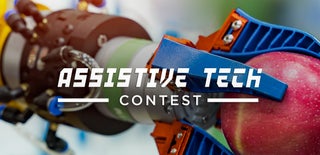Introduction: DIY 3d Printed Video Laryngoscope for Training
1- cheap borescopic camera + 3d design+ stylet
2- smartphone
Step 1: Introduction
hello, i am Mouhammed anesthetist from Egypt . my idea is to do cheap 3d printed video laryngoscope which is used by anesthesia,ICU and emergency doctors to insert endotracheal tube specially difficult intubation.
- . After I watched the video of AirAngel blade on shapeways (video) i decided to make one which is cheap and with different sizes.
so i made a design of one handle and two sizes 3&4 blades(adult). i used tinkercad mainly to design it.
i used cheap Wifi camera (borescope camera) which i bought from ALIEXPRESS. it can be connected to android , ios or windows
Step 2: Materials
1- stl files which you can get from cults3d and here the link https://cults3d.com/en/3d-model/tool/3d-printed-wi...
2- wifi borescopic camera and here the link
https://l.facebook.com/l.php?u=https%3A%2F%2Fs.cli...
3- stylet . the one in the video is the ideal but you can use the commercial one(in the picture) but the curvture should be parallel to the curvture of the blade
Step 3: 3d Printing Settings
i used creality ender3 for printing. cura 4.0 to get the gcode
layer height 0.2 , layer thickness 1.2
infill 20% but areas of articulations which is marked in the photos infill 70% or more. also any area you are in doubt that it should be strong you can increase the infill by cura
nozzle 0.4
i used tree support
blade 3 and 4 printed flat
handle printed vertical
Step 4: Steps
1- download the application of the camera on your smartphone ( wifi look) then connect wifi
2- insert camera in the groove without the cap then after passing it from the groove then connect the cap
Step 5: Insertion of the Endotracheal Tube
1- prepare ETT with the stylet where the curve of the stylet should be parallel to blade curve
2- insert the blade in the oral cavity (midline) then pass(without tounge to lateral) when you pass uvula you will see the epiglottis
3- take the tip of the epiglottis by the tip of the blade then you will see the vocal cords
4- insert ETT from lateral angel of the mouth and when in oral cavity rotate it where the curve parallel to the curve of the blade
5- see the tip of the tube then insert it into trachea
Step 6: Finally
i used PLA which is non toxic
it is not approved from FDA so better to use it in training
in developing countries it may be life saving
finally if you like my design give like and vote for me

Runner Up in the
Assistive Tech Contest










